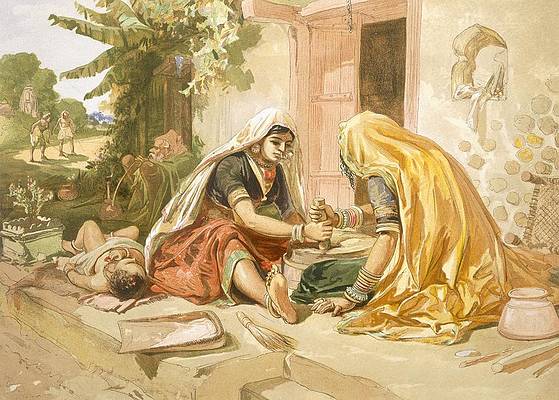
Traditionally, a woman’s place is considered to be near the hearth in her house, taking care of her family. But in the previous years, we have seen women shattering the glass ceilings and taking up jobs outside the sphere of their homes. However, the kind of work they are involved in differs a lot. Statistics prove that a majority of them are employed within the informal sector where they are left vulnerable, without any protection. They are exploited, receive unequal pay, and get no security. This is the condition of women in the informal and unorganised sector in India. However, there are safeguards put in place to protect their rights, whose effectiveness remains doubtful.
Comprehending the Organised and Unorganised Sector
The International Labor Organization (ILO) defined the informal sector as a subset of unincorporated enterprises that are not constituted as separate legal entities independently of their owners. They are usually owned by individual household members or several members from the same or different households. They operate at low levels mostly with not much division. Informal work could include both self-employed persons in informal enterprises and wage workers in informal jobs, i.e. without any social protection. Indian Ministry of labor classified informal labor into four groups, in its report published in 2008. The classification was as follows –
- By Occupation – These include small and marginal farmers, landless agricultural laborers, sharecroppers, fishermen, those engaged in animal husbandry, beedi rolling, labeling and packing, building and construction workers, leather workers, weavers, artisans, salt workers, workers in brick kilns and stone quarries, workers in sawmills, and workers in oil mills.
- By Nature of Employment – It includes attached agricultural laborers, bonded laborers, migrant workers, contract and casual laborers.
- Specially Distressed Categories – It includes toddy tappers, scavengers, carriers of head loads, drivers of animal-driven vehicles, loaders, and unloaders.
- Service Categories – It includes midwives, domestic workers, barbers, vegetable and fruit vendors, newspaper vendors, pavement vendors, hand cart operators, and the unorganized retail
Working in the informal sector has a lot of disadvantages. There is no social security and the income is fluctuating and is low. The working conditions are poor with no prestige attached to the work. Also, there is no legal protection provided. Thus, government policies often fail to serve and protect the people employed in this sector.
Condition of Women in Unorganised Sector

The conditions of employment in the informal sector are such that the workers have no protection and they are exploited by their employers with no respite. In this context, the position of women becomes even more vulnerable and hence worrisome. In India, 94% of the total women workers are employed in the informal sector and only about 20% work in urban centers. Most of these women hail from the poor sections of society and are in desperate need of money. Also, these women are usually the sole breadwinners of their families. They also have to balance their household duties with work. They do not even have proper training.
There are five major categories in the informal and unorganised sector where we can find women are employed –
- Construction Laborers – Such women are employed at the construction site to do manual unskilled labor where they are paid very less. In fact, the skilled work is given to their male counterparts, who also get higher pay for the same amount of work done.
- Domestic Workers – Women working as domestic workers are involved in household chores, which could be either part-time or full-time. Young girls are mostly involved in this type of work.
- Garment Workers – These women are employed with drapers, boutiques, and big stores, where they usually work under a male tailor (master). They are also involved with knitting woolen.
- Vendor – Women working as vendors are involved in selling a variety of commodities like broomsticks, baskets, utensils, fruits, vegetables, bangles, etc.
- Sales Girls – Women working as salesgirls can either go from door to door to sell products or sit at shops selling them. Examples are jewelry, cosmetics, and garments.
There are various reasons why women are more likely to take up jobs in the informal and unorganised sector. The main reason is that it is easy to enter this sector without any specific requirements or qualifications. No specialized skills or training is required. Thus, it appeals as an easy source of money. Mostly such jobs are not much far away from the places where they live and they can manage the work along with their household duties. The major problems faced by women in this sector are –
- Discrimination in Wages – Women often get lesser money than males for the same amount of work done. Often, the amount paid is way too less as compared to the amount of work done.
- Poor Conditions of Work – Informal workplaces do not care about the conditions in which the workers are working. They are often unhygienic with no separate washrooms for the special requirements of a woman. A clean working environment and clean drinking water are scarcely paid attention to. This often leads to women suffering from many diseases and their health continuously declines.
- Unjust terms of Work – Women working in the informal and unorganised sector do not have the benefits received by the ones working in the formal sectors. They are not given enough sick leaves, maternity benefits, and insurance. The working hours are usually very hectic which makes it difficult for them to balance their household duties along with the work.
- Exploitation – There are no safeguards for protecting a woman at an informal place of work. There are no separate committees or people designated to look into the complaints of harassment. They have to bear snide comments and discrimination with no respite. Cases of sexual harassment are very common in the informal sector. However, most of these cases go unnoticed as the women do not come forward in the fear of losing their jobs and further harassment from the employer.
- No Security – There is no job security in the informal sector. The workers are dismissed at the whims and fancies of their employers. The salary is often very less and fluctuates. There are no fixed working hours. Also, leaves are scarcely given.
- Lack of Support – Often the policies made for the betterment of people working in this sector are never properly implemented due to no concrete structure for regulation and no checks put in place. The informal workers many times do not have any kind of union or organizational support to put forward their grievances.
Safeguarding Women

The word ‘socialist’ was added to the Indian Constitution by the 42nd Amendment Act in 1976. By ‘socialist’ we meant freedom from all forms of social, economic, and political exploitation. In pursuance of this goal, our constitution contains several provisions in the form of fundamental rights and the Directive Principles of State Policy. Some of them are as follows:
- Article 14 – Right to equality
- Article 15 – Right against discrimination
- Article 21 – Right to life and liberty
- Article 19 – Freedom of movement, assembly, unions, and occupation
- Article 23 – Protection from forced labor
- Article 24 – Prohibition of Child Labor
- Article 41 – Right to work
- Article 39 – Adequate means of livelihood, fair distribution of material resources, adequate protection of workers
- Article 38, 39 – Equality of wages
- Article 43 – Decent standard of life
- Article 43A – Workers’ participation in management
Beyond these constitutional safeguards that can be employed by informal workers to protect themselves, our judiciary has also been proactive in protecting their rights.
In the case of Bandhua Mukti Morcha v. Union of India, the court held that the right to life includes protection of the health and strength of workers, protection of children against abuse, all-round development of children, educational facilities, just and humane conditions of work, and maternity relief. This case dealt with informal bonded labor under a debt bond system.
The issue of unequal pay was highlighted in the case of the State of Madhya Pradesh v. Pramod Bhartiya. The court held that the right to equal pay flows from Article 14, irrespective of the technical details or designation of the workers. It was observed that ours is a socialist state and we must protect the underprivileged or the weaker sections of society.
There are also several legislations and labor laws. However, not all apply equally to the informal and unorganised sector. The National Commission for Enterprises in the Unorganized Sector divided these legislations into the following three groups:
- Laws that apply to all the sections of Informal Labor – Equal Remuneration Act, 1976, and the Bonded Labor System (Abolition) Act, 1976.
- Laws that apply to some sections of Informal Labor – The Minimum Wages Act, 1948, Child Labor (Prohibition and Regulation) Act, 1986, Dangerous Machines (Regulation) Act, 1983, The Employment of Manual Scavengers and Construction of Dry Latrines (Prohibition) Act, 1993, Inter-State Migrant Workmen (Regulation of Employment and Conditions of Service) Act, 1979, Motor Transport Workers Act, 1961, Sales Promotion Employees (Conditions of Service) Act, 1976, and the Trade Unions Act, 1926.
- Laws that can be extended to Informal Labor – The Beedi and Cigar Workers (Conditions of Employment) Act, 1966, Payment of Wages Act, 1936, The Building and Other Construction Workers (Regulation of Employment and Conditions of Service) Act, 1996, the Contract Labor (Regulation and Abolition) Act, 1970, The Maternity Benefit Act, 1961, Workmen’s Compensation Act, 1923, and the Weekly Holidays Act, 1942.
However, the labor laws remained toothless due to ‘abysmally poor implementation’. It must be noted that several reasons for this failure are the small number of personnel, neglecting the informal and unorganised sector, lack of infrastructure, and absence of representation of voices from the informal and unorganised sector.
Conclusion
Our Constitution contains several safeguards to protect the rights of women working in the informal and unorganised sector. Additionally, some legislations also work in the same direction. However, due to a juxtaposition of several factors, none of this really helps. Despite forming a large majority, these women continue to be exploited. Organizations like SEWA are working for them. However, we need more of such initiatives. Stronger policies ought to be formulated to protect and uphold their rights because these women contribute a substantial part to our economy. Also, being welfare and socialist state, it is our duty to work for their betterment.